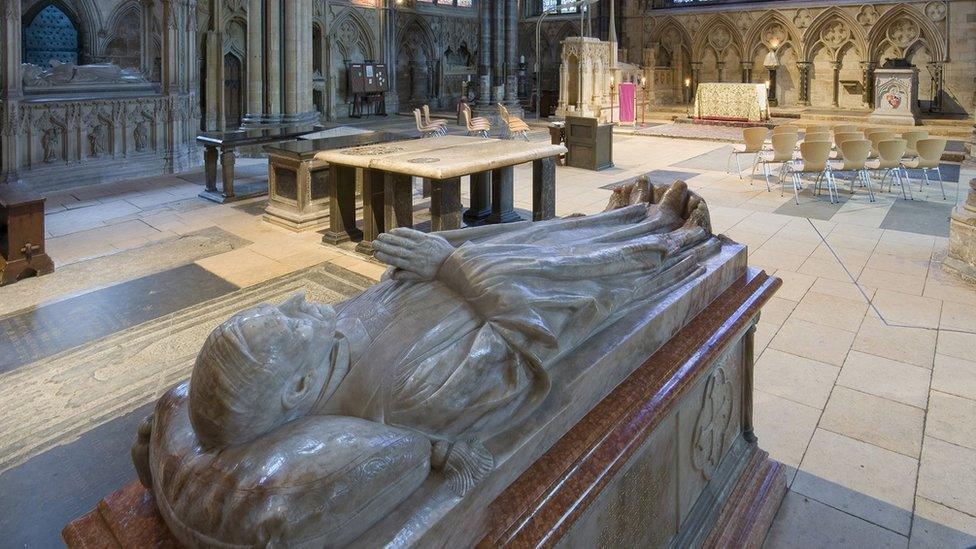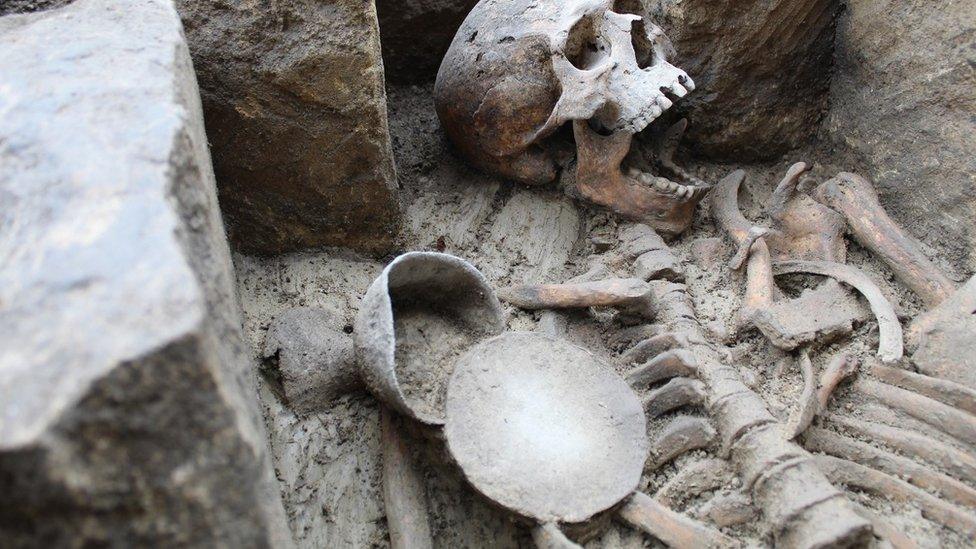Coronavirus: Lincoln Cathedral uses chalk for social distancing
- Published

Lincoln Cathedral opened its doors to visitors earlier for the first time in months
Special measures are being taken at one of England's most famous cathedrals to protect both the public and the building as it reopens after lockdown.
Lincoln Cathedral is using chalk to mark distances on the flag stone floor, rather than stickers or paint.
Officials said although the markings needed to be replaced daily, it was a necessary measure in order to protect the building.
A one-way system is also in place and guests are asked to cover their faces.
'As normal as possible'
Michelle Andrews, from the communications and marketing team, said: "We are really lucky that for an indoor attraction we've got a massive amount of space, and we can make it easy for people to keep a good distance from each other."
She added however: "We've had to be really careful how we handle the building when putting in extra precautions.
"We can't stick things to the floor, or use paint, so it is being done with chalk."

Chalk has been used on the floor to protect the flag stones from being damaged
A number of free-standing interpretation boards have been installed, along with a one-way system, safety signage and hand sanitiser stations.
Ms Andrews said they were trying to keep the signage as subtle as possible while still being effective.
"We want to keep it as normal as possible, but these aren't quite normal times," she said.

LOCKDOWN LIMIT: Can we lift lockdown any further?
SCHOOLS: When will children be returning?
EXERCISE: What are the guidelines on getting out?
THE R NUMBER: What it means and why it matters
LOOK-UP TOOL: How many cases in your area?

Guided and rooftop tours remain suspended due to it being impossible to maintain social distancing on the narrow staircase leading up.
The cathedral closed completely in late March, re-opening for private prayer on 15 June and for group worship on 5 July.
It reopened to the general public earlier.

Follow BBC East Yorkshire and Lincolnshire on Facebook, external, Twitter, external, and Instagram, external. Send your story ideas to yorkslincs.news@bbc.co.uk, external.
- Published24 July 2020

- Published24 January 2020

- Published2 June 2015
